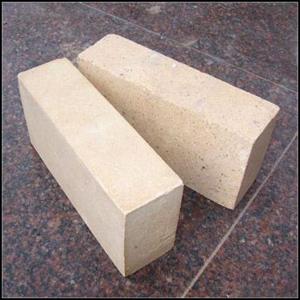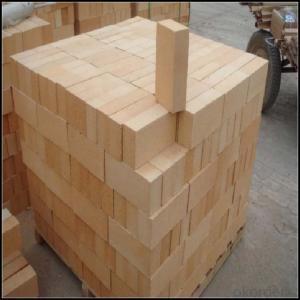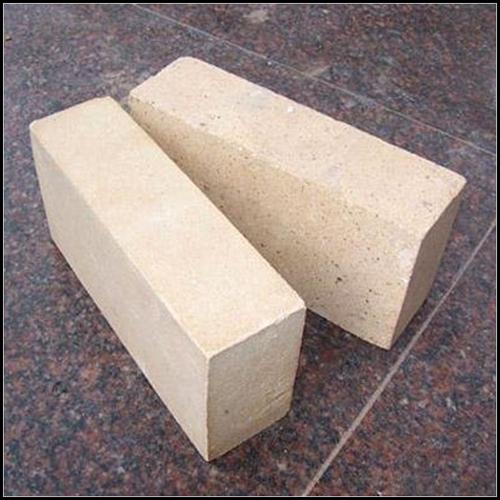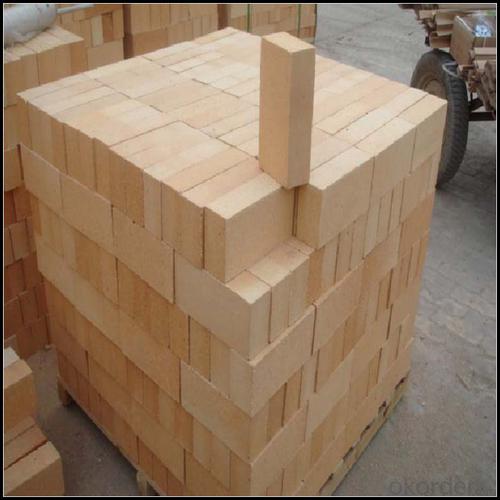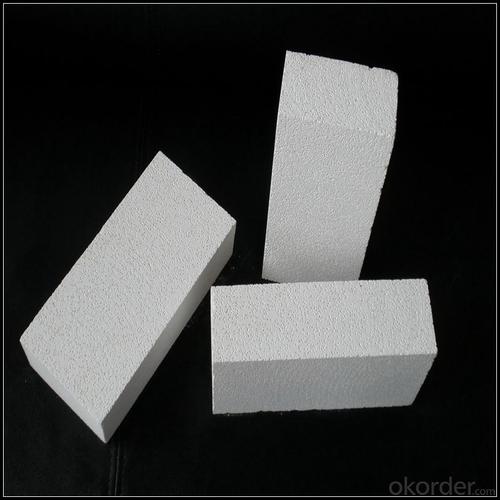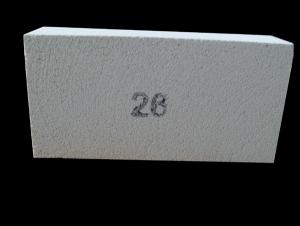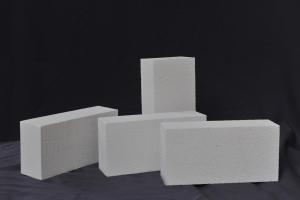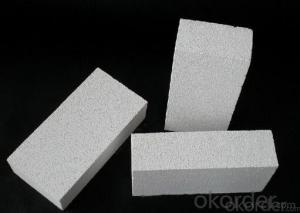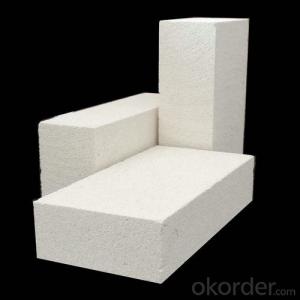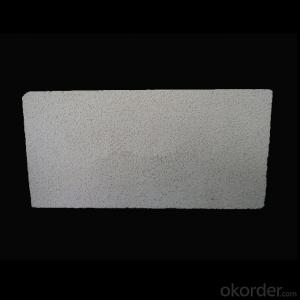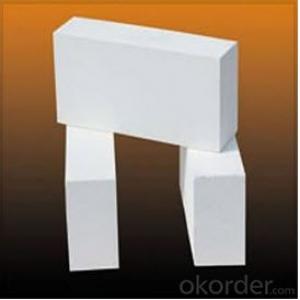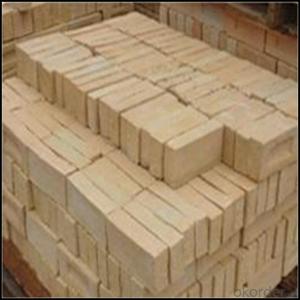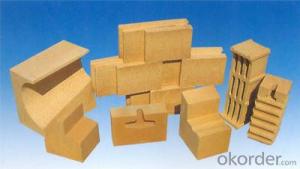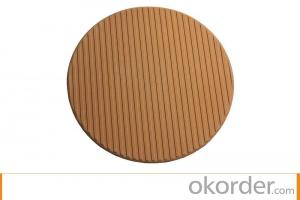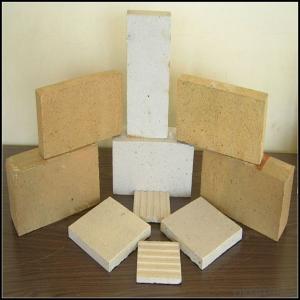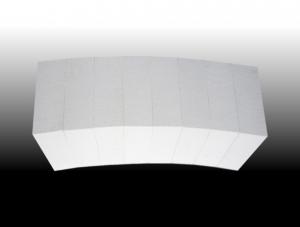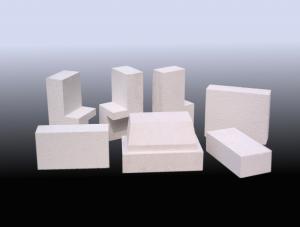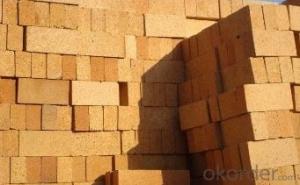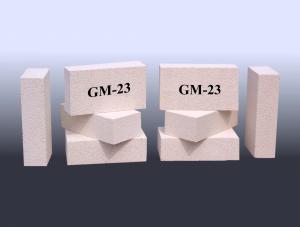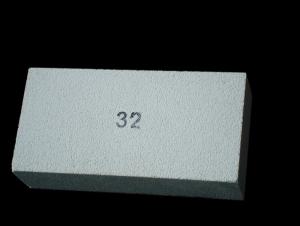Insulating Fire Brick High Alumina Brick for Pizza Oven
- Loading Port:
- China main port
- Payment Terms:
- TT OR LC
- Min Order Qty:
- 2 m.t
- Supply Capability:
- 1000 m.t/month
OKorder Service Pledge
OKorder Financial Service
You Might Also Like
Refractory Brick
CMAX firebricks are classified under temperature between 1300℃ to 1700℃, manufactured from high purity alumina clay by mixing, press-forming, drying, sintering and machining. Bricks contain carefully-graded organic fillers which are burned out during sintering to give a uniform controllable pore structure. This technique makes product feature low thermal conductivity and excellent heat insulation
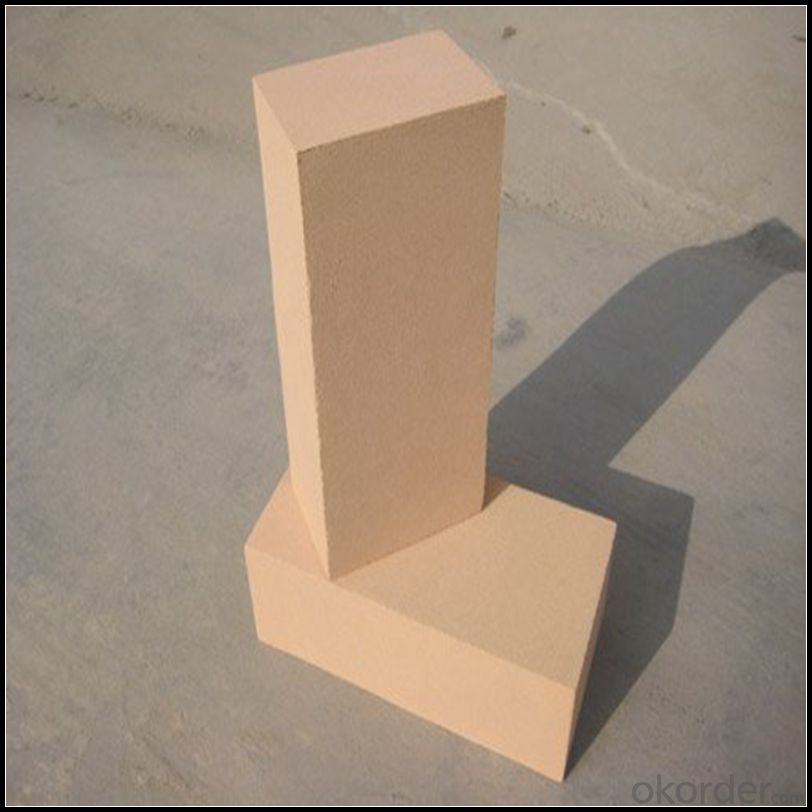
Features
Fireclay refractory brick is a main species of Aluminum silicate product, which adopt clay clinker as raw material, fireclay as bonding agent, the Al2O3 content from 30%~48%.
The refractoriness of Fireclay refractory brick from 1580 to 1770℃, which vary with the ratio of Al2O3 and SiO2
The fireclay refractory brick is faintly acid, whose acidity increasing with the content of SiO2 increasing, which has a certain resist erosion ability against acid slag.
Application
Normally used for Acidic slag furnace Lining, which is common refractory material of Blast furnace, Blast stove, Power boiler, Heating furnace, Rotary kiln, Ceramic and refractory material burning kiln.
Data Sheet
Classification Temperature (℉/℃) | 3000/1650 |
Bulk Density (g/cm3 ) | ≤1.0 |
Thermal Conductivity | |
800℃, W/m.K | ≤0.39 |
1000℃, W/m.K | ≤0.43 |
1200℃, W/m.K | ≤0.48 |
Reheating Linear Change (%) | 1550℃×12h |
≤0.9 | |
Chemical Composition (%) | |
Al2O3 | ≥75 |
Fe2O3 | ≤0.5 |
Packaging & Shipping
Packaging Details:Be packed in fumigated wooden pallets
Delivery Detail: 30 days after order

Our Services
Optimum solution and product supply of refractories for high temperature industries, such as iron steel, non-ferrous, petrochemical and building materials.
Engineering design, contract and consult for refractories, and civil architecture design.
Research, development, manufacture and sale of superhard materials.
R&D, manufacture and sale of special packing materials for export.
Inspection, supervision and arbitration of refractories.
Consultation and services in refractories information.
Training and cultivation of high-level talents in refractories profession
Sales Network

Company Information
CNBM (China National Building Material) Group is the largest comprehensive building materials group in China that in integrate scientific research, manufacturing and logistics into one entity. The largest building materials and equipment specialists in China. Upon State Council approval, today CNBM owned more than 300 subordinate manufacturing factories and servicing companies. There are 6 fully owned public listed companies and 11 partially owned with substantial shares public listed companies. In many of these fields, CNBM is playing the leading role in the building industry in the country.
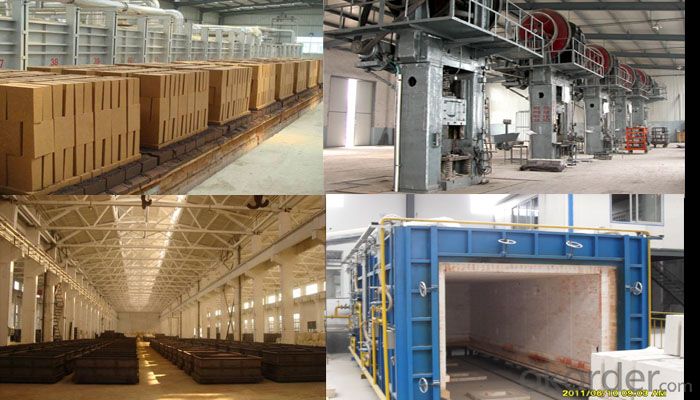
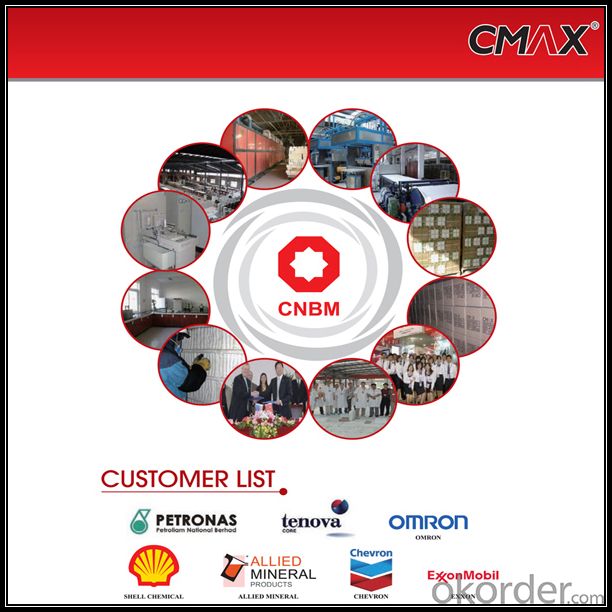
FAQ
1. Which products do you have?
We have all kinds of refractory brick, castable, mortar, cement, ceramic fiber products, etc.
Or you could browse our products to choose what you need.
2. Can you give me a brief introduction of the application of your products?
We are mainly specializing in the refractory materials in iron and steel, cement, glass, ceramics, petrochemical, electric power Industry, etc.
3. If I need your offer, what information do you need?
In order to choose suitable products, it will be appreciated to provide us the information, such us specification, technical data, order quantity, products application etc. If any question, please contact us freely.
- Q: Can insulating fire bricks be used for insulation in walls or roofs?
- Insulating fire bricks are primarily designed for use in high-temperature applications, such as furnaces, kilns, and fireplaces. While they offer excellent thermal insulation properties, they may not be the best choice for insulation in walls or roofs of residential or commercial buildings. Insulating fire bricks are often made from lightweight refractory materials, such as ceramic fibers or expanded clay. These materials are highly resistant to heat, but they may not provide sufficient insulation against cold temperatures or moisture. Additionally, their structural integrity may not be suitable for load-bearing applications or other requirements specific to walls or roofs. For insulation in walls or roofs, it is generally recommended to use materials specifically designed for building insulation purposes, such as fiberglass batts, spray foam insulation, or rigid foam boards. These materials are better suited to provide both thermal and moisture resistance, as well as meet the necessary structural requirements. In summary, while insulating fire bricks may offer excellent thermal insulation properties, they are not typically recommended for use in walls or roofs. It is advisable to consult with a building professional or insulation specialist to determine the most suitable insulation materials for your specific needs.
- Q: Masonry method for boiler refractory brick
- Ash bucket (including inclined wall masonry):(1) and an ash bucket masonry first according to drawing find horizontal center line, with the horizontal center line to find out the ash bucket longitudinal center line, coarse slag bucket at the outside edge of the straight wall before and after, based on both ends of the facade vertical center line to pop up the bottom of the ash bucket, ash bucket with bottom opening size of pillar, pop-up vertical auxiliary line using triangle pattern production (according to the drawings, the inclination of inclined wall making) inclined wall paintings in the ends of the facade of the sideline. Use the same material to make refractory concrete inclined wall bottom of the triangle from Taiwan (Figure 1) and straight wall leveling, vertical and horizontal, inclined wall at the junction of the triangle from Taiwan, with the same material refractory concrete filling, until the final setting of concrete masonry wall inclined rear can.(2) and an ash bucket masonry masonry masonry, the first transverse longitudinal component after; inclined wall and straight wall, first built after the straight wall masonry wall.(3), on the back of a foundation by inclined wall, brick and mortar foundation contact surface to be full; inclined wall on the back fill cinder, corresponding to the 2~3 layer of brick masonry masonry, each high, fill a cinder cinder, must reinforce.
- Q: Can insulating fire bricks be used in cryogenic applications?
- Yes, insulating fire bricks can be used in cryogenic applications. These bricks have low thermal conductivity and are capable of withstanding extremely low temperatures, making them suitable for insulation in cryogenic environments.
- Q: Are insulating fire bricks suitable for use in incinerators?
- Yes, insulating fire bricks are suitable for use in incinerators. These bricks are designed to withstand high temperatures and provide excellent thermal insulation, making them ideal for insulating the inner walls of incinerators. They help to retain heat, improve energy efficiency, and prevent heat loss, thereby enhancing the overall performance of the incinerator.
- Q: What is the density of insulating fire bricks?
- The density of insulating fire bricks typically ranges from 0.6 to 1.5 grams per cubic centimeter (g/cm³). However, the exact density can vary depending on the specific composition and manufacturing process of the insulating fire brick. These bricks are designed to have lower density compared to regular fire bricks, which allows them to have better insulating properties. The lower density helps in reducing heat transfer and increasing energy efficiency in various applications such as furnaces, kilns, and ovens.
- Q: What is a heat insulating brick?
- Thermal insulation brick is a new type of energy-saving building insulation technology with inorganic composite material as the main material. It is an ideal technology to replace the traditional wall insulation.
- Q: Can insulating fire bricks be used in the construction of melting furnaces?
- Insulating fire bricks can indeed be utilized in the construction of melting furnaces. These bricks are specifically designed to withstand high temperatures while possessing excellent thermal conductivity. Their primary purpose is to minimize heat loss and conserve energy, rendering them highly suitable for melting furnaces. Additionally, these bricks are lightweight and easily manageable, providing convenience during construction. They are also capable of effectively retaining heat and maintaining a steady furnace temperature, thus ensuring efficient melting and casting processes. Moreover, insulating fire bricks exhibit resistance to chemical corrosion and mechanical stress, showcasing their durability and reliability for long-term use in melting furnaces. In conclusion, considering their thermal properties, ease of use, and durability, insulating fire bricks are a fitting choice for constructing melting furnaces.
- Q: Can insulating fire bricks be used for insulation in boilers?
- Certainly, insulation in boilers can make use of insulating fire bricks. These bricks are specially engineered to endure extreme temperatures and offer exceptional thermal insulation. Their thermal conductivity is minimal, resulting in a significant decrease in heat dissipation and an enhancement in the energy efficacy of boilers. Moreover, insulating fire bricks are lightweight and simple to install, rendering them a favored option for boiler insulation. They aid in preserving elevated temperatures within the boiler, facilitating efficient combustion and heat transfer, while simultaneously shielding the outer framework from excessive heat. All in all, insulating fire bricks are a dependable and efficient alternative for boiler insulation.
- Q: Are insulating fire bricks suitable for use in thermal power plants?
- Insulating fire bricks are indeed suitable for utilization in thermal power plants. By possessing low thermal conductivity, these bricks effectively retain heat and prevent its dissipation. In the context of thermal power plants, where elevated temperatures are generated, insulating fire bricks can be employed as linings for furnaces, boilers, and other apparatus to furnish thermal insulation and augment energy efficiency. Furthermore, these bricks exhibit resistance towards high temperatures and are capable of enduring thermal shocks, rendering them highly suitable for deployment in environments characterized by extreme heat. The utilization of insulating fire bricks in thermal power plants enables operators to curtail heat loss, enhance the overall efficiency of the plant, and bolster the durability and lifespan of the equipment.
- Q: Are insulating fire bricks suitable for high-temperature kilns?
- Yes, insulating fire bricks are suitable for high-temperature kilns. Insulating fire bricks are designed to withstand high temperatures and provide excellent thermal insulation, making them ideal for use in kilns that require high operating temperatures. These bricks are made from lightweight and porous materials, such as clay or silica, which have low thermal conductivity. This allows them to effectively trap heat within the kiln and prevent heat loss, while also providing insulation against the external environment. Additionally, insulating fire bricks have good resistance to thermal shock, meaning they can withstand rapid temperature changes without cracking or breaking. Overall, insulating fire bricks are a reliable and efficient choice for high-temperature kilns.
Send your message to us
Insulating Fire Brick High Alumina Brick for Pizza Oven
- Loading Port:
- China main port
- Payment Terms:
- TT OR LC
- Min Order Qty:
- 2 m.t
- Supply Capability:
- 1000 m.t/month
OKorder Service Pledge
OKorder Financial Service
Similar products
Hot products
Hot Searches
Related keywords
